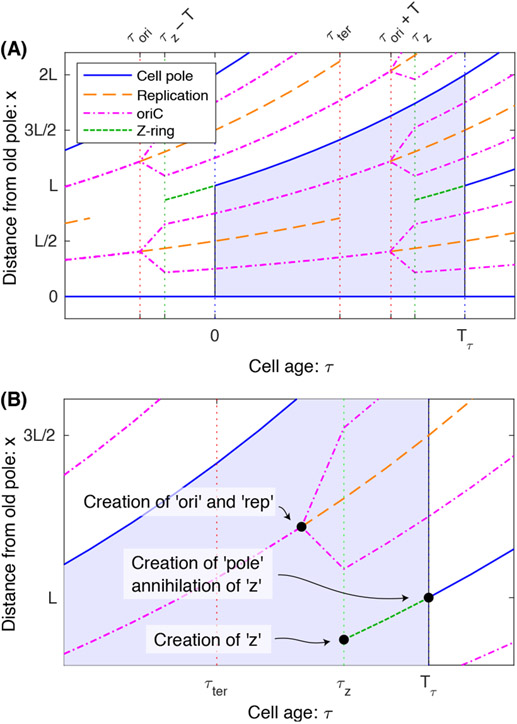FIG. 1. Panel A: Schematic for positioning and timing of events during the E. coli cell cycle.
In the deterministic model, the duration of the cell cycle as well as the timing of all events in the cell cycle are precise (i.e. deterministic). Furthermore, we shall assume the positioning of all complexes and the length of the cell are all deterministic as well. The shaded region represents one complete cell cycle. We have also annotated the positioning and timing of a number of cell cycle events: (i) Cell poles appear as the consequence of septation and do not disappear. (ii) Replication of the chromosome starts when the origin (oriC) is replicated and ends when the terminus is replicated. The origin is replicated before the start of the cell cycle. (iii) New origins are created and move from the quarter-cell positions to the eighth-cell positions after replication. (iv) The Z ring, which drives septation at midcell, assembles and disassembles at the end of the cell cycle. Panel B: Creation and annihilation. The statistics of different types of quantities will have different statistical properties. Transient quantities undergo both creation and annihilation events. The Z ring and replisome are natural examples of transients since they assemble and then disassemble. In contrast, both cell poles and genetic loci are perpetual quantities that only undergo creation but never annihilation.

